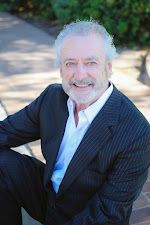 |
| The significance of land: "It is in land that culture, economics, and identity coalesce into a complex whole." |
Talking Back to the Indian Act: Critical Readings in Settler Colonial Histories
It's a bit of a frustrating read, but an important one. I have prided myself on tackling contentious issues, a difficult read or not, I want to learn more. In the spirit of Truth and Reconciliation, I have endeavoured to read up on the past. My only criticism is the small font chosen for the paperback.
I understand that the target audience is a younger, university-aged crowd. I am thinking, however, that it would work for those Truth and Reconciliation Committees, which exists in many communities. Here in Lanark County it is called: Lanark County Neighbours for Truth & Reconciliation. People engage in education, ceremony, understanding, and learning about the past, and relationships between Indigenous and White Settler communities.
It is important, following the Truth and Reconciliation Act, to bear witness to the misogyny, the gender bias, and the stereotypical attitudes of those who wrote the Indian Act, and created abusive Residential Schools. First Nations have spent much time, energy, and willpower, fighting back peacefully, and in the courts.
The Indian Act (1876) is a disturbing means by which the Britain Crown rounded up First Nations, treated them like children, and banished them to reserves, where they were treated, at best, as wards or children of the state, or slaves, to endure violence, indignities, and abuse. This text provides specific letters and documents which demonstrate this attitude. Eventually, we understand, the Crown went from recognizing First Nations as an equal nation, to trying to eradicate and eliminate Indigenous Peoples.
The book is an excellent tool for a professor, charged with facilitating student learning, critical thinking and reflection. Certainly, an aforementioned committee, or a book club could use this as a reference. It contains the text of salient acts and letters, maps, footnotes within each chapter, lists of questions to stimulate thinking, a chronological list of Indian Act timelines, and an index. I think I would have appreciated a list of acronyms, as well.
It is important, following the Truth and Reconciliation Act, to bear witness to the misogyny, the gender bias, and the stereotypical attitudes of those who wrote the Indian Act, and created abusive Residential Schools. First Nations have spent much time, energy, and willpower, fighting back peacefully, and in the courts.
The Indian Act (1876) is a disturbing means by which the Britain Crown rounded up First Nations, treated them like children, and banished them to reserves, where they were treated, at best, as wards or children of the state, or slaves, to endure violence, indignities, and abuse. This text provides specific letters and documents which demonstrate this attitude. Eventually, we understand, the Crown went from recognizing First Nations as an equal nation, to trying to eradicate and eliminate Indigenous Peoples.
The book is an excellent tool for a professor, charged with facilitating student learning, critical thinking and reflection. Certainly, an aforementioned committee, or a book club could use this as a reference. It contains the text of salient acts and letters, maps, footnotes within each chapter, lists of questions to stimulate thinking, a chronological list of Indian Act timelines, and an index. I think I would have appreciated a list of acronyms, as well.
Some salient points
5 C's of Historical ThinkingFive concepts that are the foundation of historical thinking: change over time, context, causality, contingency, and complexity.
4 Rs of Indigenous Methodologies
Touchstones of Indigenous methodologies–relationship, responsibility, respect, and reciprocity.
My conclusion, and that of many scholars, is that the Indian Act of 1876 was meant to remove Indigenous status of First Nation citizens, in which community can be preserved, to steadfastly eradicating all culture, traditions and values. The British government, and its white, male representatives, moved from an attitude of respect and protecting Indigenous Peoples from white settlers, to attempting to integrate them into white society, to using every means possible to reduce First Nations culture and society to rubble.
Speech made by Chief Deskaheh, March 10th, 1925
As Ottawa purportedly attempted an Indian Advancement strategy, and Washington managed to assimilate his people, the Chief made a powerful speech, in which he says rather than these, it is tyranny. Indeed, he stated,"We are tired of calling on the governments of pale-faced peoples in America and Europe. We have tried that and found it was no use. They deal only in fine words...We want justice from now on. After all that has happened to us, that is not much for us to ask. You got half of your territory here by warfare upon red-men, usually unprovoked, and you got about a quarter of it by bribing their chiefs, and not over a quarter of it did you get openly and fairly." (p. 74-79)




TABLE OF CONTENTS
APTN News
He worked with Amnesty International to examine the OPP actions. ... Hay is a former RCMP officer and former chief of the Tyendinaga Mohawk Police. ... They were taken on April 25, 2008 showing OPP officers with assault rifles ... other documents, that the OPP viewed the Mohawks as violent criminals...
He worked with Amnesty International to examine the OPP actions. ... Hay is a former RCMP officer and former chief of the Tyendinaga Mohawk Police. ... They were taken on April 25, 2008 showing OPP officers with assault rifles ... other documents, that the OPP viewed the Mohawks as violent criminals...



















































